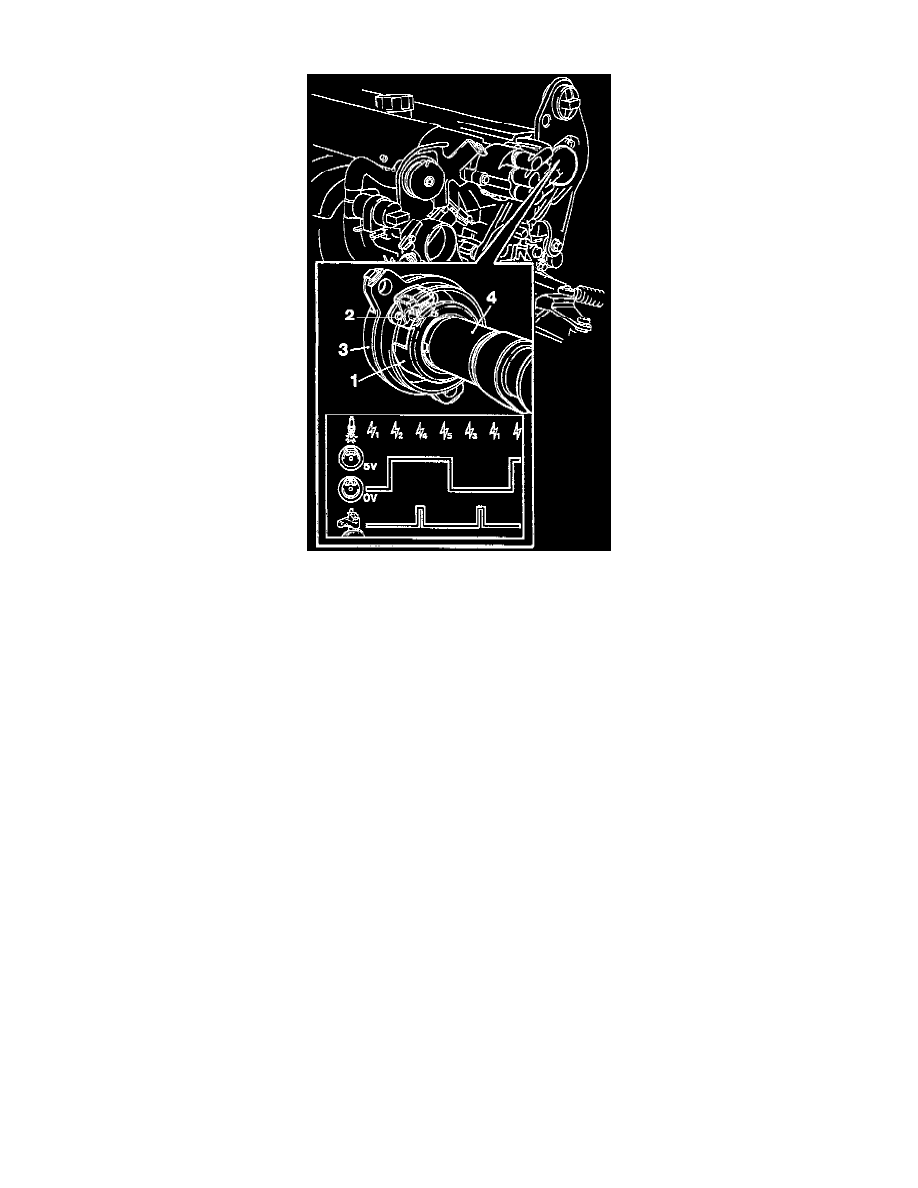850 T-5R L5-2.3L Turbo VIN 58 B5234T5 (1995)

Camshaft Position Sensor: Description and Operation
CAMSHAFT POSITION SENSOR
The purpose of the Camshaft Position (CMP) Sensor is to supply the ECM with information as to whether the crankshaft is on the first or second
revolution of a working cycle. Together with the RPM sensor, the CMP sensor also provides the ECM with information enabling it to identity which
cylinder is knocking, if knock is detected by one of the two Knock sensors.
The CMP sensor consists of the following components:
^
Trigger rotor (1)
^
Hall detector (2)
^
Cover (3)
The trigger rotor spins at the same speed as the camshaft (4). The control module supplies 5 Volt voltage to the hall detector. When the opening in the
trigger rotor is opposite the hall detector this voltage will be grounded, and the output signal will be O Volts. When the hall detector is shielded from
the magnet, the voltage is not affected and the output signal will be 5 Volts.
Since the camshafts rotate at half the crankshaft speed, the output signal goes high and low every second crankshaft revolution, corresponding to the
working cycle in the respective cylinders.
The ECM uses the CMP sensor signal to determine in which cylinder ignition is required and also, if knock is detected, which cylinder is knocking.
The ECM delivers ignition in cylinders 1 and 3 when the signal is low (0 V) and in cylinders 2, 4 and 5 when the signal is high (5 V).
If the CMP sensor signal to the ECM is lost, the engine will not start.
The CMP sensor is located at the rear of the engine, on the exhaust side.
